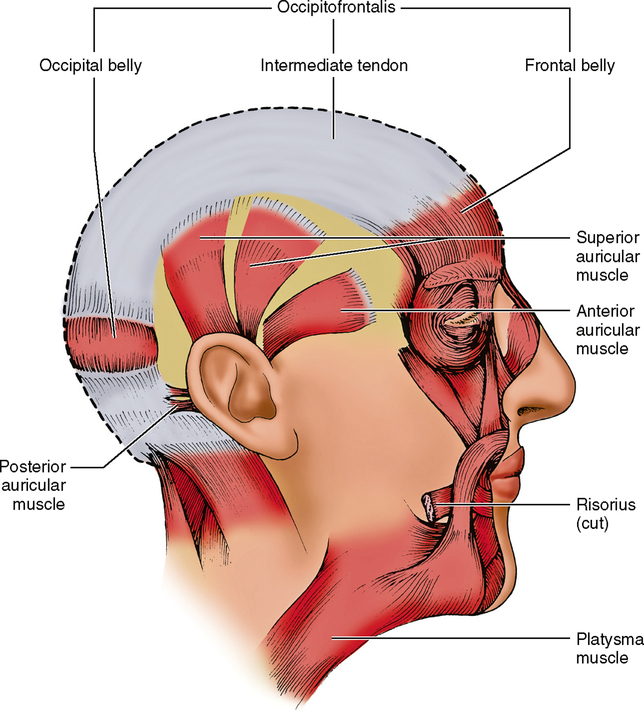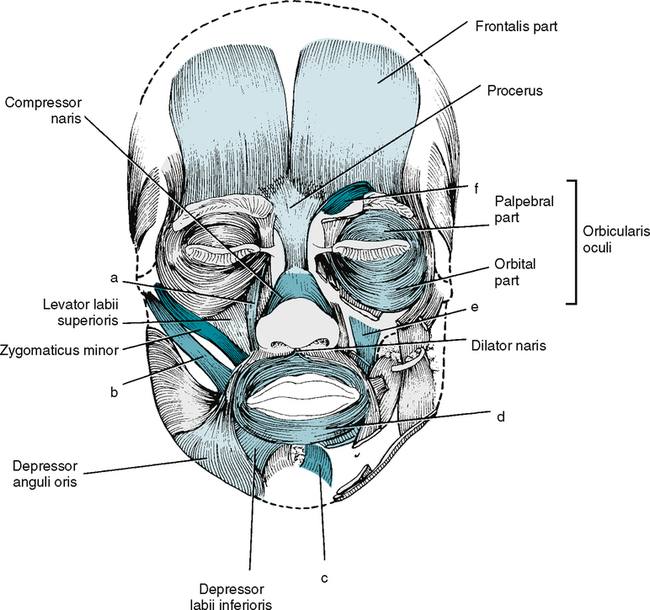Muscles of Facial Expression
• To name the various groupings or locations of the muscles of facial expression and their nerve supplies
• To name all the muscles surrounding the mouth and their origins, insertions, and actions
• To discuss the role of the buccinator muscle in mastication
• To describe the other muscles of facial expression and their origins, insertions, and actions
EARS
The muscles around the ears are not well developed in humans. However, in lower forms of animals, they are better developed, and the ears can be easily moved and repositioned to better catch sounds. There are three pairs of ear muscles (Fig. 30-1).

SCALP
The muscles of the scalp allow for its mobility both forward and backward.
Occipitofrontalis (Epicranius)
The occipitofrontalis (epicranius) is a paired muscle with groups of fibers in front and back connected by a broad flat band of fascia. The anterior and posterior groups of muscle fibers take their origin from connective tissue of the scalp. This kind of attachment allows for either forward or backward movement of the scalp. The forward movement results in a frown or a squint, and the backward movement raises the forehead skin as in surprise (see Fig. 30-1).
NECK
Platysma
There is some disagreement as to which end of the platysma is the origin and which is the insertion. The upper end of the fibers attaches to the inferior border of the mandible, near the angles of the mouth and the skin of the face in that area. They pass down in a broad flat sheet to end in the skin of the chest area just below the clavicle. The muscle lies just below the skin of the neck; thus it moves the skin over the neck quite noticeably when it contracts, pulling the corners of the mouth down or the skin of the upper pectoral region up (see Fig. 30-1).
Stay updated, free dental videos. Join our Telegram channel

VIDEdental - Online dental courses



